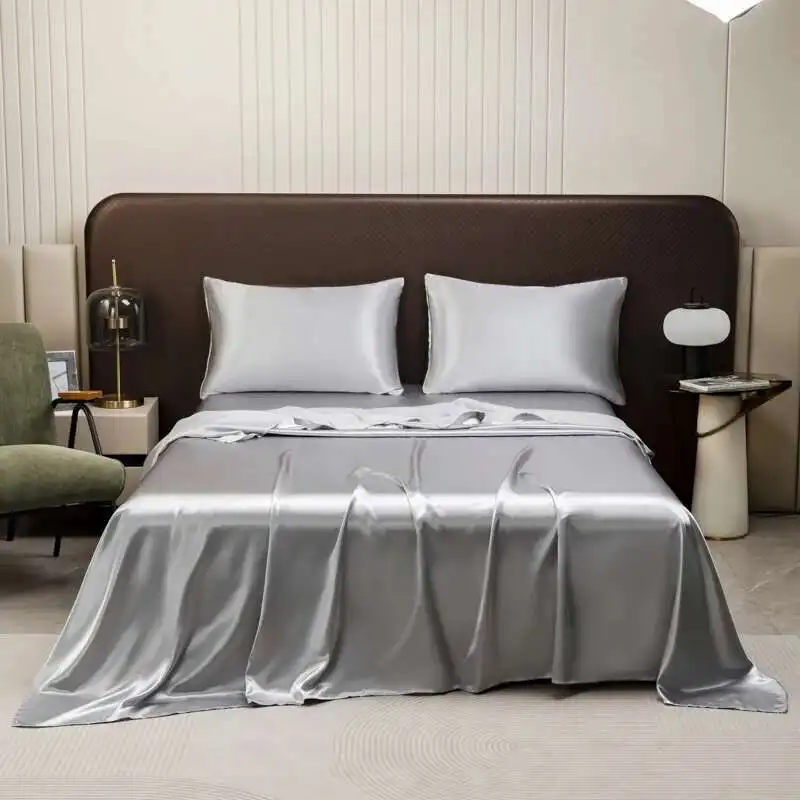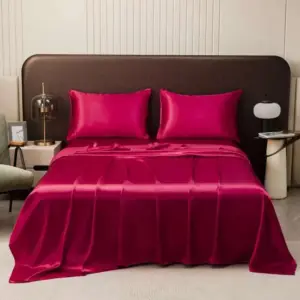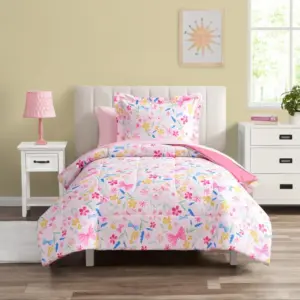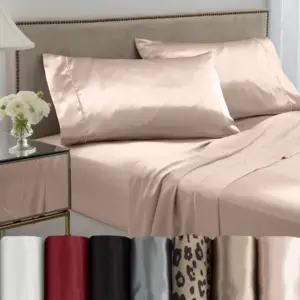Introduction: Why Thread Count Is Misleading for Silk Quality
Thread count is not the right measure of silk quality—this is one of the most common misconceptions when shopping for silk products. While thread count has become a familiar quality indicator for cotton bedding, applying this same metric to silk fabrics is fundamentally misleading.
This confusion stems from our familiarity with cotton bedding marketing, where higher thread counts often signal premium products. However, silk is an entirely different natural fiber with unique properties that require different quality measurements. When evaluating silk quality, factors like momme weight, silk grade, and fiber type are far more important indicators.
Understanding the true measures of silk quality is essential for making informed purchases. Without this knowledge, you might end up paying premium prices for silk products that aren’t actually premium quality. The amazing benefits of Mulberry silk sheets can only be fully experienced when you select truly high-quality silk.
In this guide, we’ll explore what really determines silk quality and why measuring silk quality properly matters for your comfort, product longevity, and overall satisfaction.
What Is Thread Count and Why It Doesn’t Apply to Silk
Thread count refers specifically to the number of threads woven into one square inch of fabric, counting both horizontal (weft) and vertical (warp) threads. For cotton fabrics, a higher thread count often indicates that finer threads are used, potentially creating a smoother and more densely woven fabric—though this relationship has its limits and can be manipulated by marketing.
For silk, however, this measurement system simply doesn’t apply due to fundamental differences in the fibers themselves. Cotton is a short-staple fiber that must be spun into yarn before weaving, while silk naturally exists as one continuous long fiber. A single silkworm filament can stretch 1,000 to 3,000 feet in length! This means silk threads are already extraordinarily fine and long without needing to be spun.
When retailers advertise silk products with thread count metrics, they’re often applying cotton fabric terminology to silk inappropriately. Some sellers even artificially inflate these numbers by counting plies within threads rather than actual threads, creating misleading claims about “best silk sheets thread count.”
The textile industry has developed much more appropriate measurements for silk quality that actually reflect what matters in the fabric’s performance and feel. These metrics provide meaningful information about the silk’s weight, density, durability, and overall quality level.
When shopping for Mulberry silk sheets, understanding these differences becomes critical to making a wise investment in your comfort and sleep quality.
Momme Weight: The True Measure of Silk Quality
Momme (pronounced “moh-mee” and abbreviated as “mm”) is the proper measurement for evaluating silk quality. This traditional Japanese unit measures the weight in pounds of a piece of silk fabric measuring 45 inches by 100 yards. In simpler terms, momme tells you how dense and heavy the silk is.
This weight measurement originated in Japan’s historic silk trade and remains the industry standard today because it directly correlates to several important quality factors:
- Density – Higher momme silk contains more silk per square inch
- Durability – Heavier silk tends to last longer and resist wear
- Opacity – Higher momme silk is typically less transparent
- Drape – The way silk hangs and moves changes with its weight
- Thermal properties – Heavier silk provides more insulation
The typical momme range for silk products spans from 6mm (very light) to 30mm (very heavy), with most quality products falling between 12mm and 25mm. For comparison, 19mm silk weighs about 80 grams per square meter.
While higher momme generally indicates better quality, the ideal weight depends on the specific product and its intended use. Very heavy silk isn’t always better—for example, summer sleepwear benefits from lighter silk to enhance breathability.
Understanding the relationship between momme vs thread count in silk helps consumers make better purchasing decisions based on genuine quality indicators rather than misleading marketing metrics.
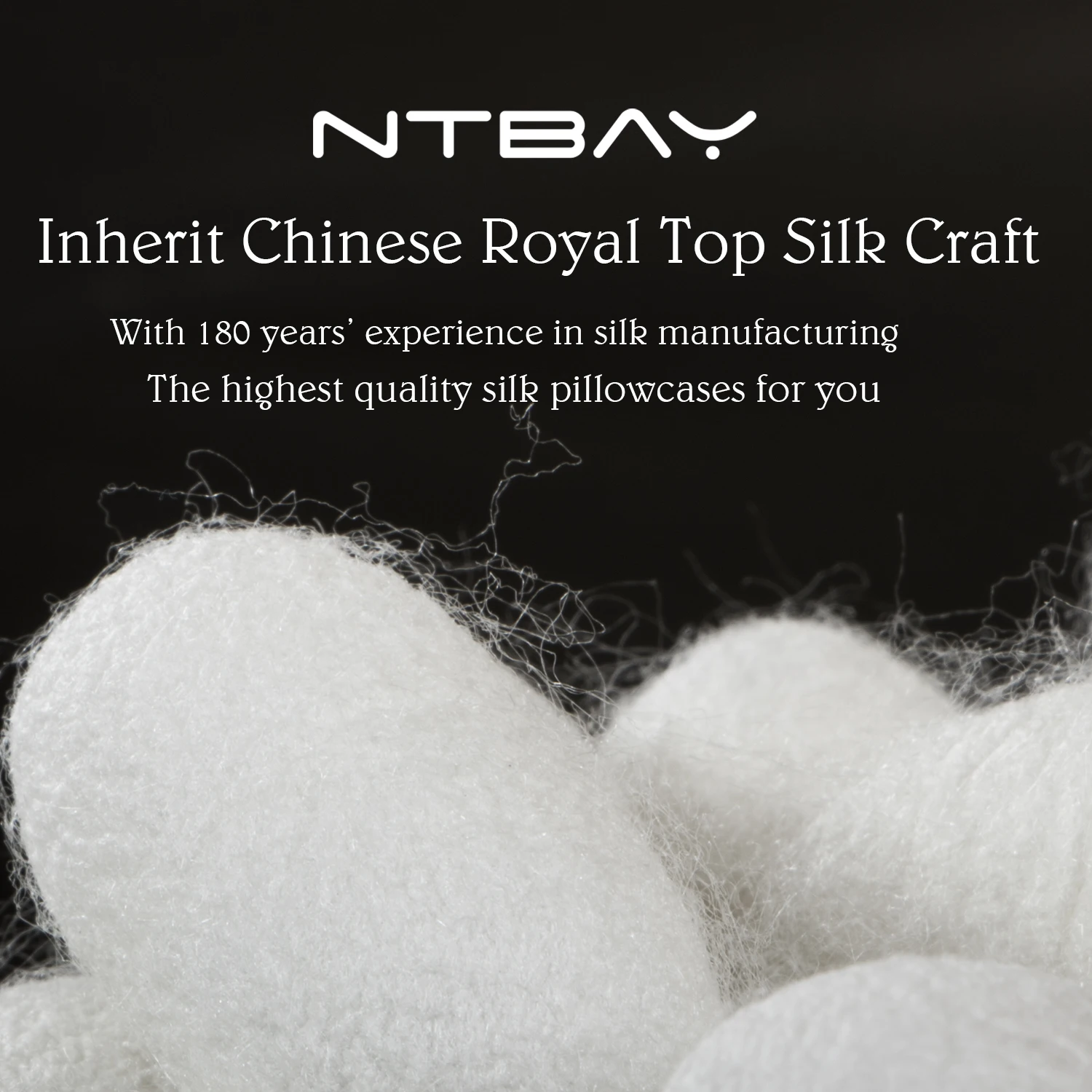
Our silk pillowcases collection features carefully selected momme weights to provide the ideal balance of luxury feel and practical durability.
Recommended Momme Weights for Different Silk Products
Different silk products require different momme weights to perform optimally. Using the right weight for each application ensures the perfect balance between luxury, functionality, and longevity. Here’s a practical guide to help you choose the ideal momme weight for various silk items:
| Product Type | Recommended Momme Range | Why This Range Works Best |
|---|---|---|
| Silk sheets and pillowcases | 19-25mm | Balances durability with softness; withstands regular washing |
| Silk duvets and comforters | 16-22mm | Provides insulation while maintaining breathability |
| Silk pajamas and sleepwear | 16-22mm | Offers durability while draping comfortably on the body |
| Silk scarves and accessories | 8-16mm | Light enough for graceful draping; varies by season |
| Silk dresses and formalwear | 12-19mm | Provides structure while maintaining elegant movement |
For bedding specifically, 19-22mm is often considered the sweet spot for everyday luxury. Below 19mm, silk sheets may not withstand regular use and washing as well, while above 25mm they might feel too heavy for comfortable sleep in warmer weather.
For example, Mulberry silk bed sheets in the 19-25mm range offer the perfect combination of luxurious feel, natural drape, and practical durability. The fabric is substantial enough to withstand regular use while remaining breathable and smooth against the skin.
When shopping for 100% silk sheets, always check the momme weight rather than looking for thread count information. This ensures you’re evaluating the product by the proper quality metric and getting true value for your investment.
Understanding Silk Grades: From 6A to Basic
Beyond momme weight, silk grade is another crucial indicator of quality. The grading system classifies silk based on several important characteristics that affect its performance, appearance, and feel. The scale typically ranges from A (basic quality) to 6A (premium quality), with 6A representing the highest standard of Mulberry silk available.
Key factors that determine silk grade include:
- Fiber length and uniformity: Longer, more consistent fibers create smoother fabric with fewer knots or slubs
- Purity and cleanliness: Higher-grade silk has fewer impurities and contains a higher percentage of pure silk protein (fibroin)
- Strength of filaments: Premium grades resist tearing and maintain integrity over time
- Natural luster and sheen: Higher grades exhibit more vibrant, even luster without artificial enhancers
- Color consistency: Top-grade silk accepts dyes evenly and maintains consistent coloration
Grade 6A Mulberry silk represents the pinnacle of silk quality. These fibers come from silkworms fed exclusively on mulberry leaves under ideal conditions, producing exceptionally long, strong, and uniform filaments. The resulting fabric feels remarkably smooth and displays a natural sheen that lesser grades cannot match.
The combination of momme weight and grade provides a comprehensive quality assessment. For example, 22mm 6A grade silk offers superior durability and luxurious feel compared to 22mm 4A grade, even though both share the same weight.
Understanding what makes Mulberry silk special helps explain why premium grades command higher prices and provide superior performance, particularly for items like Mulberry silk pillowcases that come in direct contact with your skin.
Types of Silk: Why Mulberry Silk Is Superior
Not all silk is created equal. Different varieties come from different silkworm species fed on different diets, resulting in significant variations in fiber quality. Mulberry silk stands above all other varieties for several important reasons.
Mulberry silk comes from Bombyx mori silkworms that feed exclusively on mulberry leaves. This specialized diet produces exceptionally fine, strong, uniform fibers that create the smoothest silk fabric available. The resulting material boasts impressive natural properties:
- Longer individual filaments (up to 3,000 feet per cocoon)
- More regular, consistent fiber thickness
- Naturally white color that accepts dyes beautifully
- Superior tensile strength despite incredible fineness
- Natural temperature regulation properties
In comparison, other silk varieties have notable limitations:
Tussah/Wild Silk: Produced by wild silkworms that eat oak and juniper leaves, resulting in shorter, coarser fibers with a more textured feel and natural tan color that’s harder to dye.
Dupioni Silk: Created using double cocoons, featuring characteristic slubs and irregularities that create a textured, rustic appearance rather than smooth luxury.
Habotai Silk: A lighter-weight, more affordable silk that’s softer but significantly less durable than Mulberry silk.
The advantages of sleeping on Mulberry silk include better moisture management, temperature regulation, and gentler treatment of skin and hair—benefits that simply aren’t matched by other silk varieties or synthetic alternatives.
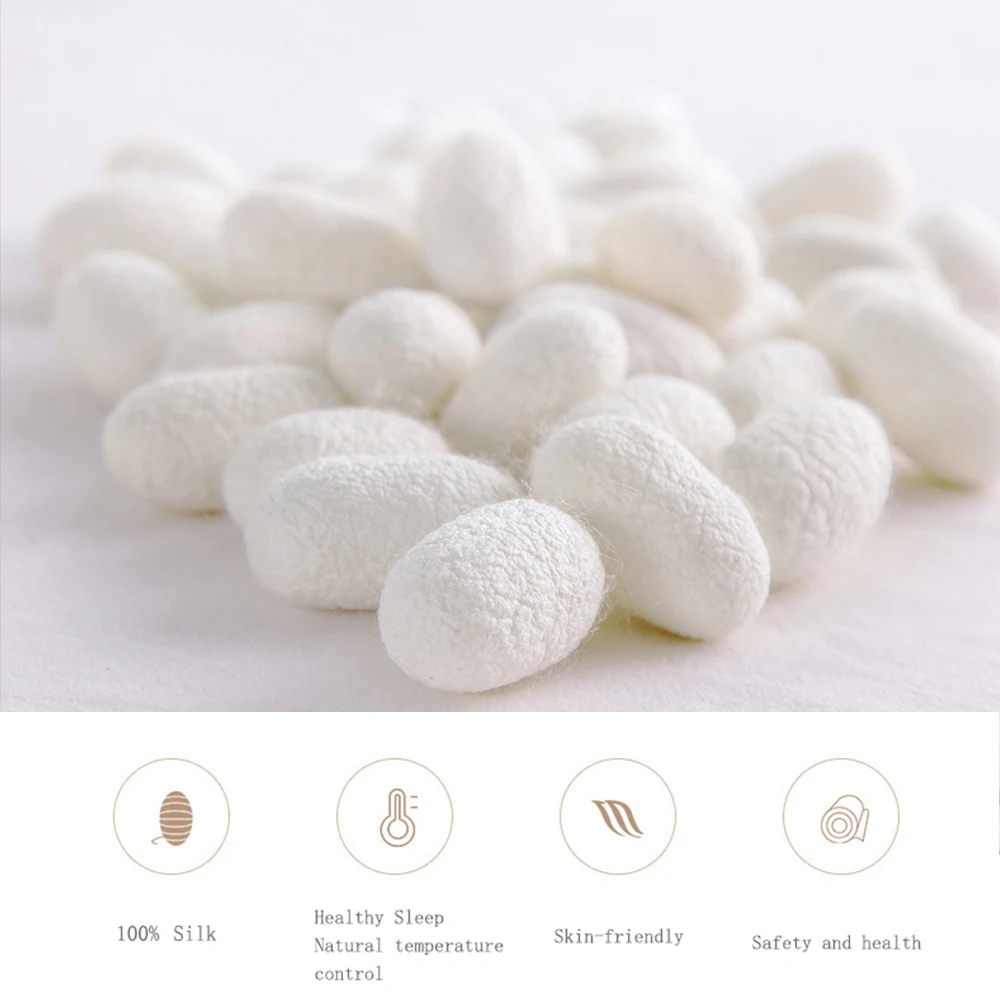
Our luxury silk bedding sets feature only premium Mulberry silk to ensure you experience the full benefits of this extraordinary natural material.
Silk Weave Types and Their Impact on Quality
While the type of silk fiber determines fundamental quality, how those fibers are woven together also significantly affects the fabric’s characteristics. Different weave patterns create distinctive textures, appearances, and performance properties without changing the underlying silk quality.
Common silk weaves include:
Charmeuse: The classic silk weave with a smooth, lustrous front side and matte reverse. This weave creates the iconic slippery-soft feel most associated with luxury silk. It drapes beautifully but can be somewhat delicate.
Crepe de Chine: Features a slightly textured surface created through the use of highly twisted yarns. This creates a matte appearance with excellent drape and slightly more durability than charmeuse.
Satin: A weave technique (not a fabric type) where the warp threads float over multiple weft threads, creating a smooth, glossy surface. Silk satin is luxurious and reflective, while polyester satin is a common synthetic alternative.
Habotai: A lightweight plain weave with equal crossings of warp and weft threads. This creates versatile, affordable silk with good durability despite its lighter weight.
Mulberry Silk Twill: A diagonal weave pattern that creates a subtle texture while maintaining excellent durability. Often used for heavier silk items like winter scarves.
It’s important to understand that weave affects performance characteristics but doesn’t determine the fundamental quality of the silk itself. High-quality Mulberry silk can be woven in different patterns for different purposes while maintaining its superior properties.
The exceptional benefits of Mulberry silk sheets are present regardless of weave pattern, though the specific weave may enhance certain qualities for particular uses or preferences.
Our silk sheets collection features various weave types to suit different preferences while maintaining consistent quality standards in the silk fiber itself.
How to Identify Quality Silk When Shopping
When shopping for silk products, these practical tests can help you distinguish genuine quality silk from inferior options:
1. The Touch Test
– Quality silk feels smooth and cool to the touch initially
– When held against skin, it warms quickly (unlike synthetics)
– Premium silk has a soft, substantial feel without being heavy
– Run your hand across the surface—quality silk creates a subtle resistance rather than slipping
2. The Visual Test
– High-quality silk displays a natural, subtle sheen rather than an artificial shine
– Look for even coloration without blotchiness
– Hold up to light to check for uniform weave without obvious irregularities
– Examine for the characteristic two-tone effect where color appears to change slightly from different angles
3. The Movement Test
– Quality silk drapes and moves fluidly
– When scrunched gently in your hand, it should unfold gracefully without excessive wrinkling
– Fabric should feel smooth and supple while still having some substance
4. The Sound Test
– Gently rub the fabric between your fingers
– Quality silk makes a distinctive soft rustling sound (often called “scroop”)
– Synthetic alternatives typically sound more plasticky
When reading product descriptions, look for specific information about:
– Momme weight (ideally specified as a number, not just “heavy” or “lightweight”)
– Silk grade (6A being the highest quality)
– Type of silk (Mulberry being superior)
– OEKO-TEX or similar certifications confirming safety standards
Understanding true silk sheet quality helps you make informed purchases based on meaningful quality indicators rather than marketing terminology.
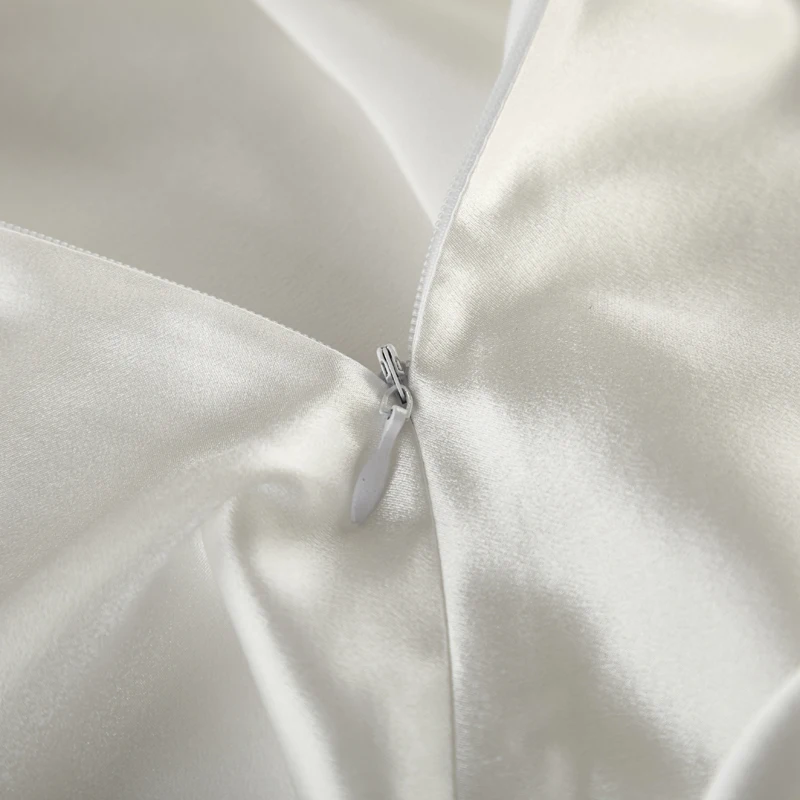
Avoiding Common Misleading Marketing Tactics
The silk market is unfortunately filled with misleading terminology designed to confuse consumers. Being aware of these tactics will help you identify genuinely high-quality products:
Watch for these red flags:
Emphasis on thread count: As we’ve established, thread count is not a relevant measure for silk quality. When sellers prominently advertise thread count for silk products, it often indicates they’re trying to distract from more important quality metrics.
Vague terminology: Terms like “silk-like,” “silky,” “satin feel,” or “silk blend” typically indicate synthetic materials rather than genuine silk. Real silk products will clearly state “100% silk” or “pure silk.”
Missing specifications: Quality silk retailers proudly specify momme weight, grade, and silk type. When this information is absent, it often indicates lower quality the seller prefers not to disclose.
Impossibly low prices: Producing high-quality silk is labor-intensive and requires premium raw materials. Prices that seem too good to be true usually indicate either synthetic alternatives or very low-grade silk.
Authentic silk producers take pride in their products’ specifications and are transparent about momme weight, grade, and silk type. When shopping online, look for detailed product descriptions that confidently share these details rather than focusing on vague luxury terminology.
Understanding why silk bedding quality and momme weight matters helps you see through marketing tactics designed to confuse rather than inform consumers about what they’re actually buying.
Why Investing in High-Quality Silk Is Worth It
While premium silk products require a higher initial investment, they offer substantial long-term value that makes them worth every penny:
Superior Longevity
High-quality silk (19-25mm) can last for many years with proper care, while lower-grade options may begin to thin or deteriorate after just a few months. This extended lifespan significantly reduces the cost per use over time.
Enhanced Comfort Experience
Premium silk offers a distinctly superior sleep experience through better temperature regulation, moisture management, and a smoother surface against skin. These performance benefits directly impact sleep quality night after night.
Skin and Hair Benefits
Higher-grade silk contains more sericin protein and creates a smoother surface that generates less friction against skin and hair. The Mulberry silk bedding skin benefits include reduced sleep creases, better moisture balance, and gentler treatment of both skin and hair over time.
Sustainable Choice
Quality silk is biodegradable and, when properly cared for, doesn’t need frequent replacement like lower-quality alternatives. This reduces overall consumption and environmental impact over time.
True Luxury Experience
Beyond practical benefits, genuine high-quality silk delivers an authentic luxury experience that synthetic “silk-like” materials or low-grade silk simply cannot match. The distinctive feel, drape, and subtle luster of premium silk create a genuine sense of everyday luxury.
Full-size Silk Sheets, King Size Silk Sheets, Queen Size Silk Sheets, Twin Size Silk Sheets, Washable Silk Sheets
Price range: $95.95 through $178.37 Select options This product has multiple variants. The options may be chosen on the product page100% Silk Sheets, Green Silk Sheets, King Size Silk Bedding Set, Mulberry Silk Bedding Sets, Queen Size Silk Bedding Set
Price range: $1,246.21 through $1,615.22 Select options This product has multiple variants. The options may be chosen on the product pagePink Silk Sheets, Twin Size Silk Sheets
$171.80 Select options This product has multiple variants. The options may be chosen on the product pageFull-size Silk Sheets, Pink Silk Sheets
$136.31 Select options This product has multiple variants. The options may be chosen on the product pageGrey Silk Sheets, Silk Sheet and Pillowcase Set
Price range: $88.20 through $146.64 Select options This product has multiple variants. The options may be chosen on the product pageBamboo Silk Sheets, Cooling Silk Sheets
Price range: $130.76 through $177.80 Select options This product has multiple variants. The options may be chosen on the product page
At Sanctuary Soft, we believe that quality sleep products are an investment in your wellbeing. The time you spend sleeping is too valuable to compromise with inferior materials that don’t deliver the full benefits that premium silk can provide.
FAQs About Silk Quality and Selection
Is higher momme always better for all silk products?
No, the ideal momme weight depends on the product’s purpose. Bedding benefits from 19-25mm for durability, while summer sleepwear might be more comfortable at 16-19mm. Extremely high momme (above 28mm) can feel heavy and less breathable for some applications.
What’s the best momme weight for silk pillowcases?
For pillowcases, 19-22mm offers the ideal balance between luxurious feel and practical durability. This weight withstands regular washing while maintaining the smooth surface needed for hair and skin benefits.
How can I tell if my silk product is authentic?
Authentic silk feels cool to the touch initially but warms quickly, has a distinctive soft sheen (not a plastic-like shine), and makes a soft rustling sound when rubbed together. The burn test is definitive: real silk burns slowly, smells like burning hair, and leaves crushable ash, while synthetics melt.
Does silk shrink when washed?
Quality silk typically shrinks minimally (1-2%) if washed according to care instructions. Lower quality silk may shrink more significantly. Always check care labels and consider hand washing or delicate machine cycles with silk-specific detergent.
How do I properly care for silk to maintain quality?
Wash in cold water with mild detergent specially formulated for silk, avoid direct sunlight when drying, and store in a breathable container away from direct sunlight. For bedding, rotating sets extends their lifespan.
What is the difference between silk and satin?
Silk is a natural fiber, while satin is a weaving technique that can be applied to any fiber (including silk, polyester, or nylon). “Silk satin” refers to silk fabric woven in a satin pattern, while most inexpensive “satin” is made from polyester.
Is vegan silk a good alternative to real silk?
Advanced bamboo vs Mulberry silk fabric alternatives can provide some similar benefits, though they typically don’t quite match all the properties of real silk. Quality plant-based alternatives are improving and can be good options for those avoiding animal products.

